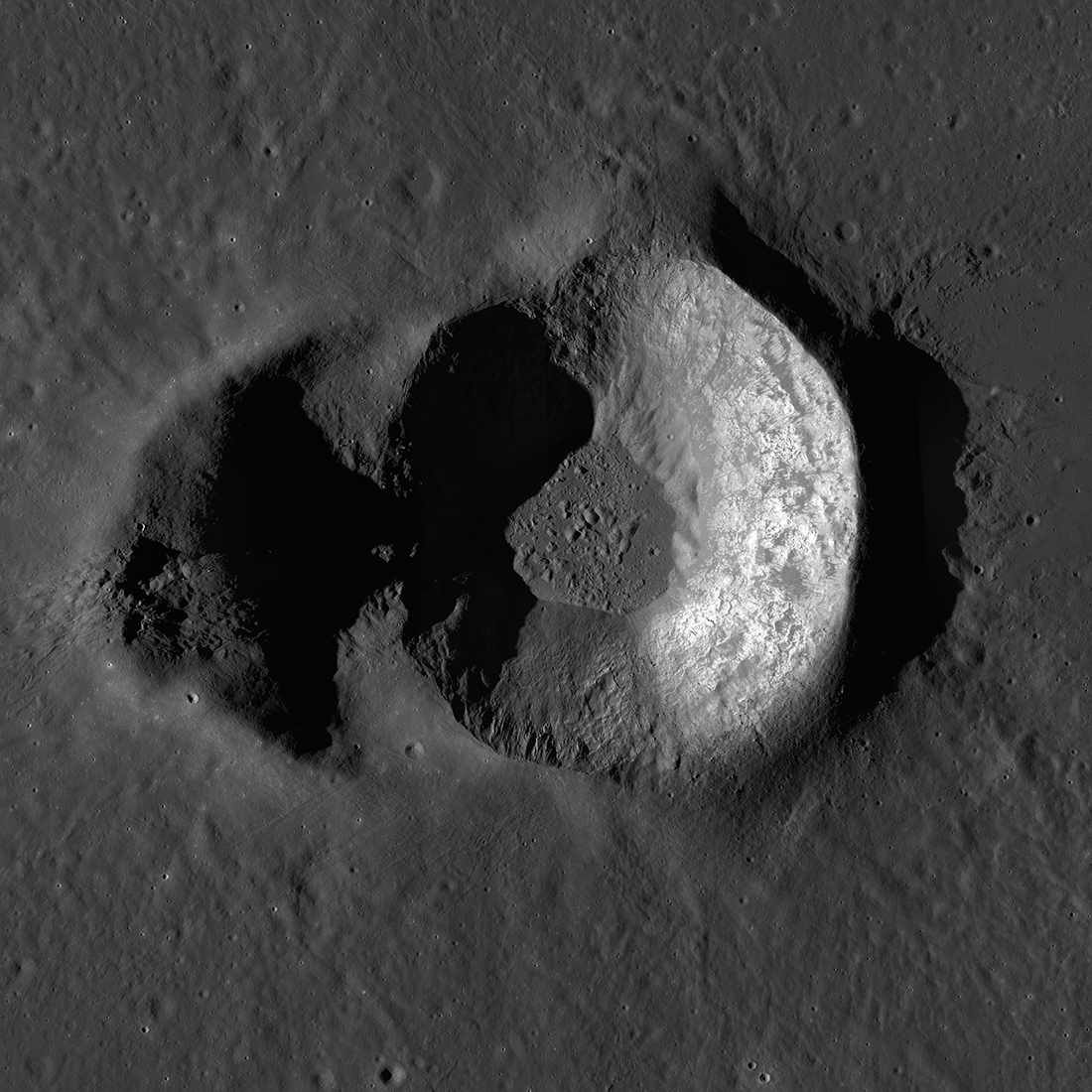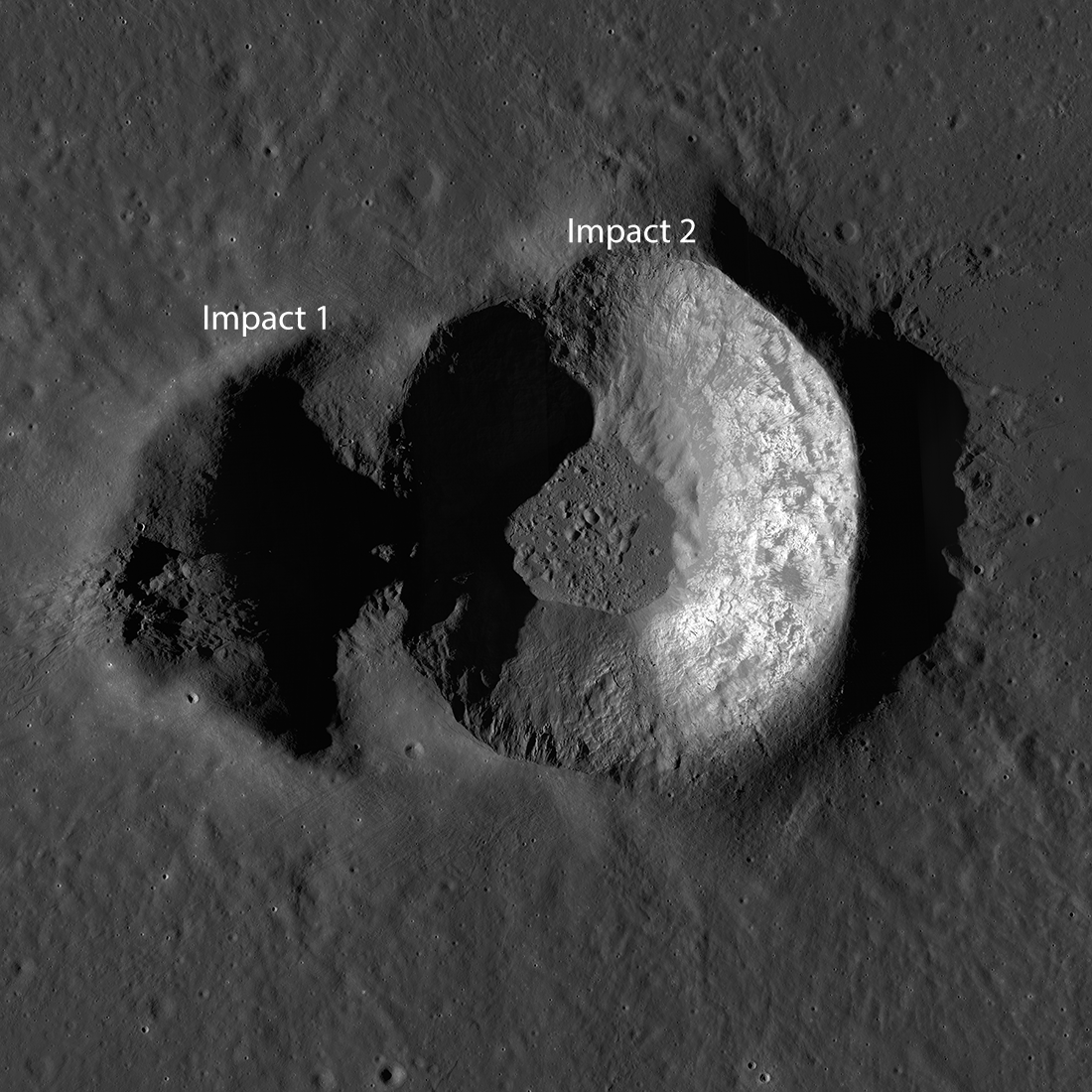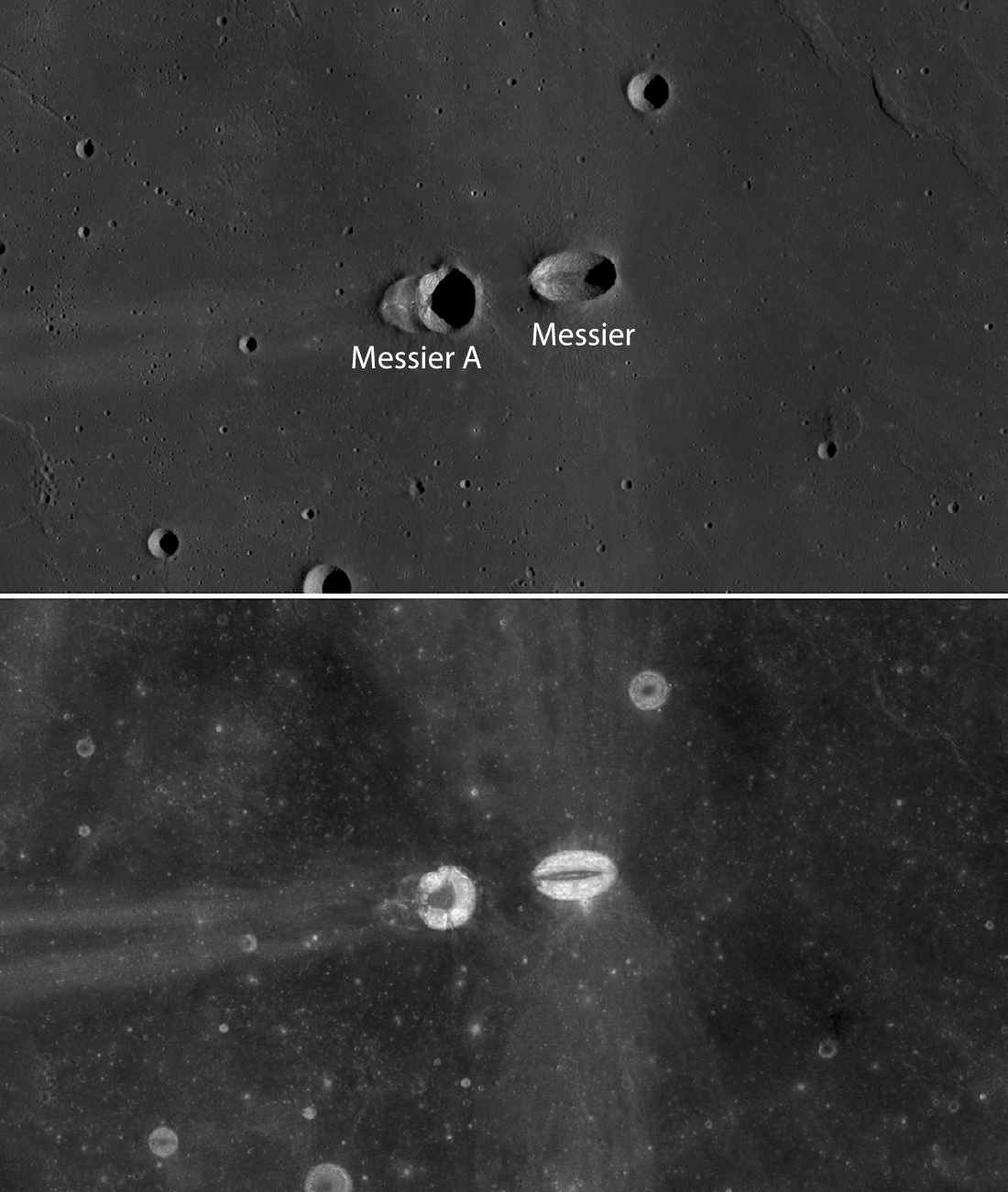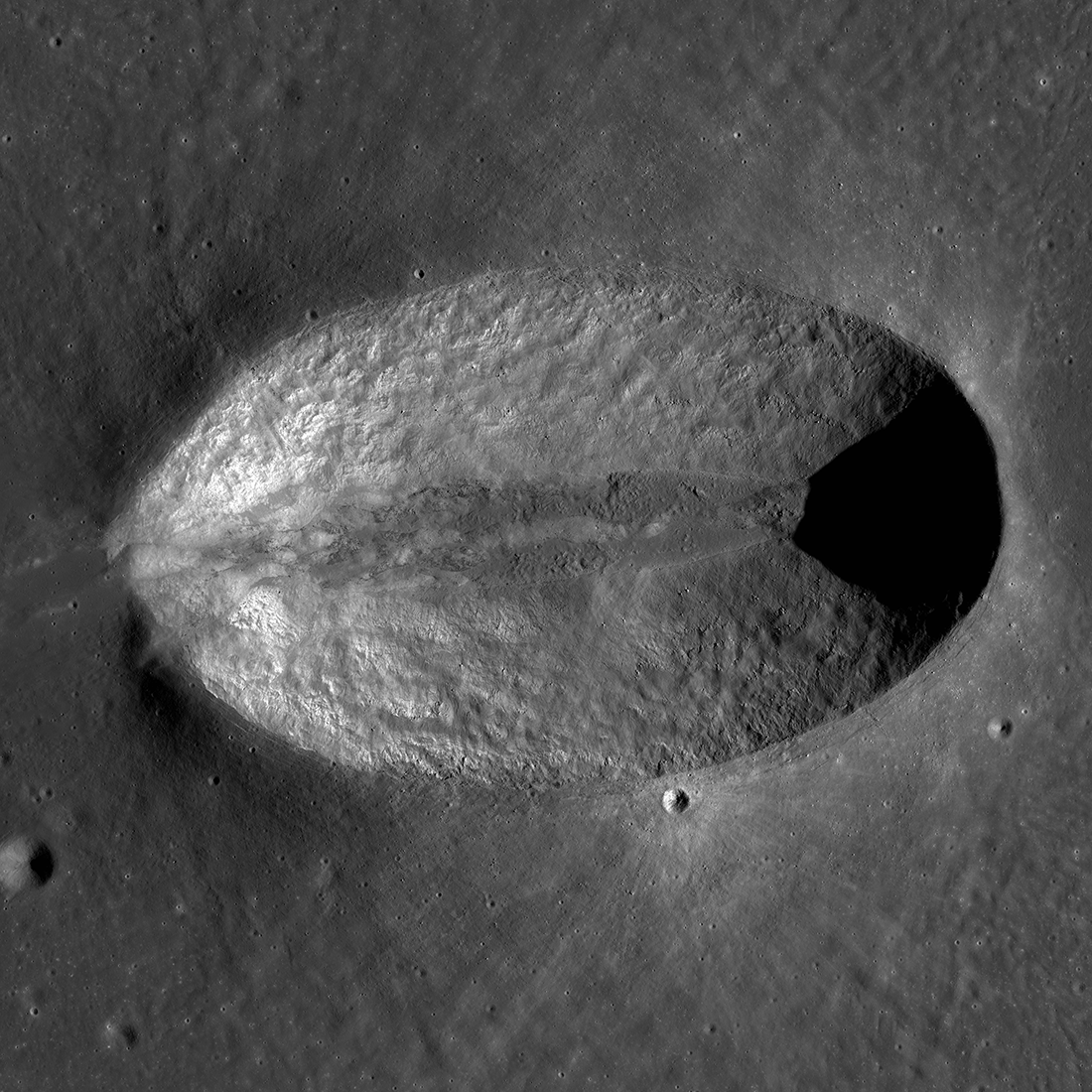
Messier A crater, located in Mare Fecunditatis, presents an interesting puzzle. The main crater is beautifully preserved, with a solidified pond of impact melt resting in its floor. But there is another impact crater beneath and just to the west of Messier A. This more subdued and degraded impact crater clearly formed first, and so is labeled Impact 1 below, with Messier A following as Impact 2. But what interval of time separated these two impact events? Perhaps Impact 1 occurred thousands of years or more before Impact 2, and was just unlucky to have a similarly sized impact crater form nearly directly on top of it.

But it is also possible that these two craters formed just seconds apart. If we zoom out a bit, in the image below we find that these two craters are not alone – they are joined by Messier crater itself, just to the east. (Often once a crater in a region of the Moon is named, other craters nearby are given "satellite feature" names with a letter: there are actually craters Messer, Messier A, B, D, E, J, and L, though their names do not imply a genetic relationship.) Messier crater is extremely elongated, which is an indication that it formed when an impactor struck the surface at a very shallow angle (less than 15° from the surface). Its high-reflectance rays stretch to the north and south, caused by ejecta that was emplaced asymmetrically, another sign of a low-angle impact. Messier crater's presence suggests that each of these impact craters may be related, forming when an impactor broke up, and struck the surface as three pieces instead of just one. The first, most western impact, may have been artificially aged by the ejecta of Messier A, whose rays of ejecta largely swept across this crater as they stretched out to the west.


Another theory (the "decapitated" impactor scenario) suggests that the impactor could have actually split apart after hitting the surface at the Messier impact site, with a portion of the impactor continuing downrange to form Messier A crater.
Check out the beautiful full-resolution view of Messier A crater below!
Related Featured Images:
Feature Mosaics: Behind the Seams
The full resolution Feature Mosaics can be downloaded here:
Published by Alyssa Bailey on 1 April 2020